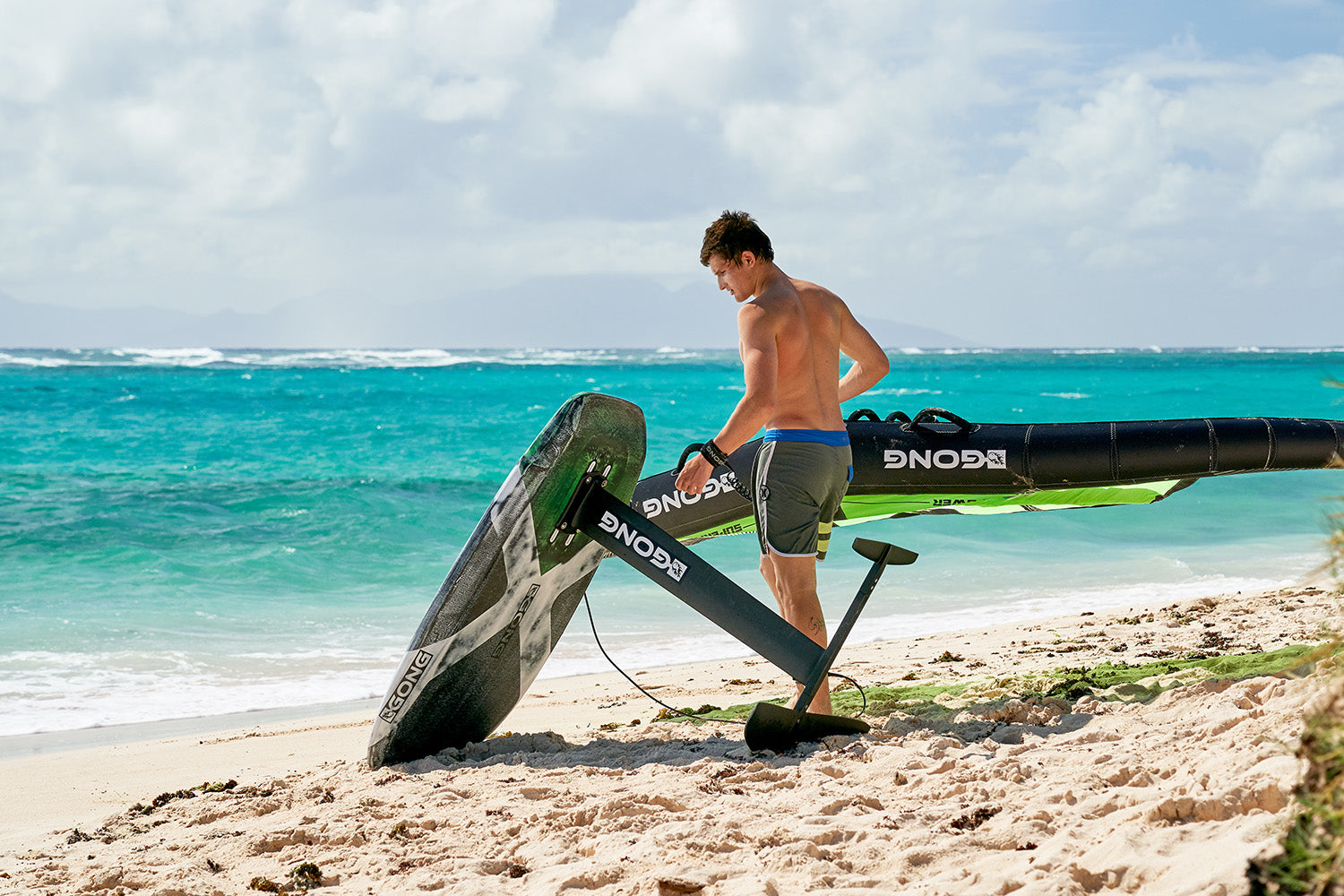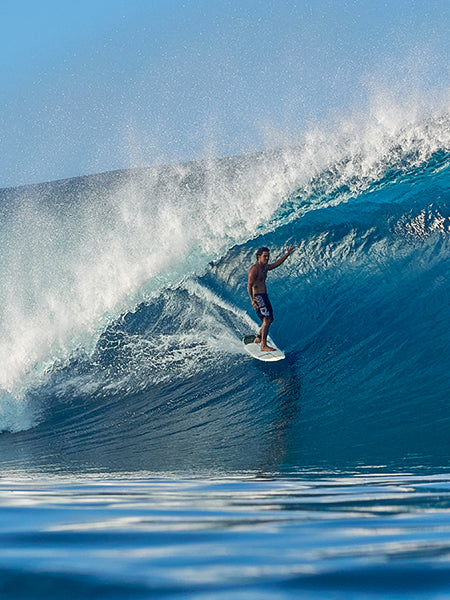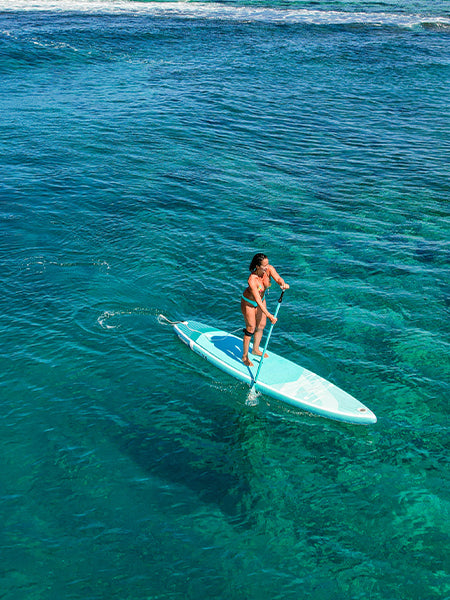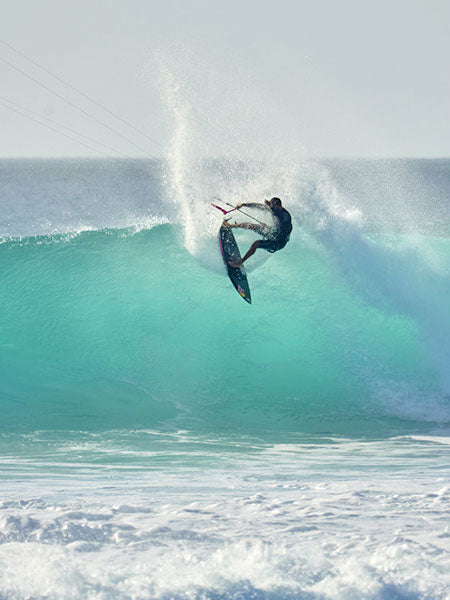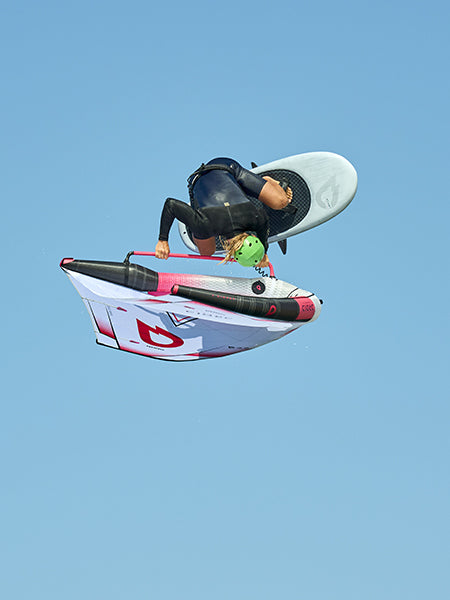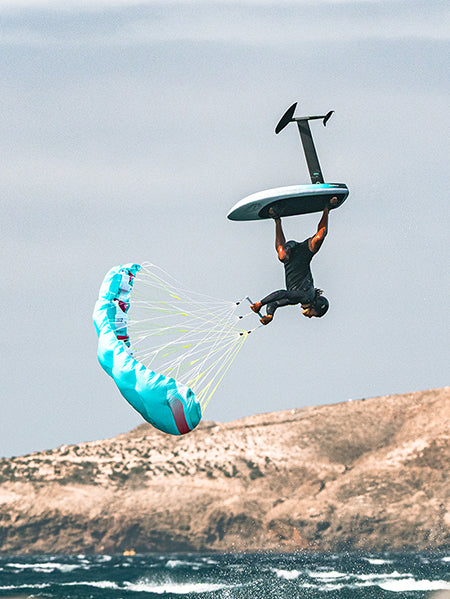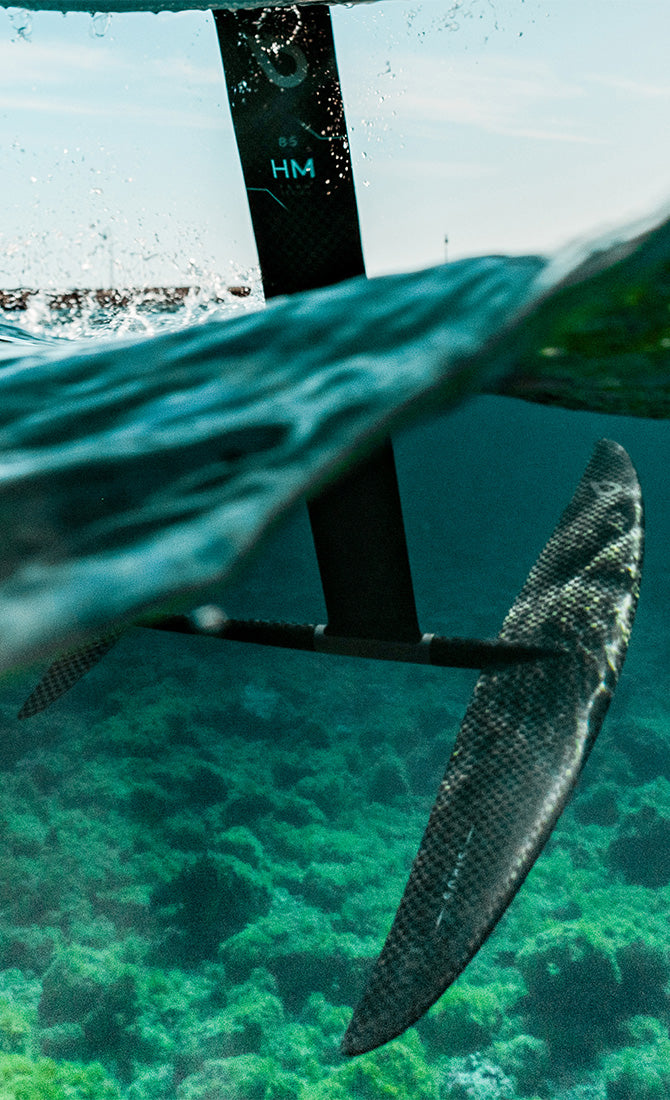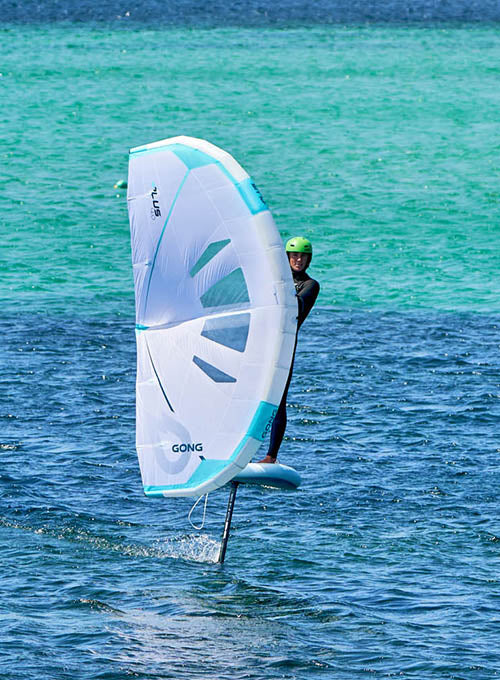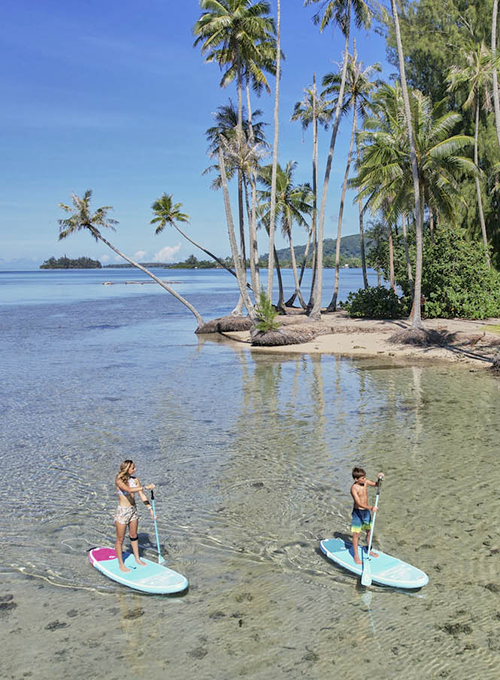Because our role has been, and always will be, to accompany you throughout your progress, we have created a How To section for everything related to the practice of the Wing. From the most basic to the most radical moves, you will find everything you need to understand and improve your technique.
The length:
It facilitates balance while increasing the glide and inertia. Below 6′, starting out is more complex because the balance is tricky.
The big questions are:
Do you have room to store and transport your Wing board?
A 6′ fits everywhere, a 7′ fits easily in a Golf, and a 8′6 requires a garage and roof racks. Of course, a 5’0 is absolutely magical to carry, but it requires some experience.
Inflatable or rigid Wingboard?
So far, we don’t know any inflatable Wingfoil board capable of decent performances in Wingfoil. They deform a lot and return information very badly, making piloting risky. We recommend the use of rigid boards unless a brand brings a significant innovation to make the inflatable board comparable to the performances of the rigid one.
Do you want to Wing cool or radical?
Below 6′ the boards are very lively while above 6′ they are super chill and boost your early stages.
A longer board also increases inertia, so you have to be a little bit more aggressive in some turns, which is something it doesn’t like so much. But it also offers an incomparable glide, very smooth. A long length also allows you to fly very early by gliding relatively fast on the water before flying without too much effort to accelerate and keep your balance. A longer board will also keep its trajectory on the water, be more docile. In the first sessions, it is very difficult to control the trajectory and have enough speed before flying. It is therefore fundamental to keep length when you start.
A shorter board allows radical turns, or even to break the curves for a more extreme ride. It’s another style, very technical and physical, that condenses energy to burn it better in the moves. You pump more easily, and the board responds instantly.
Very small boards, below 5’0, have a very low glide speed. The balance while standings still and before flight is precarious as it combines the management of forward/backward instability with port/starboard and reduced lift. But with a reasonable volume and width, we can consider winging with this kind of board without being world champion. They are ultra-responsive, offer high performances, and are easily transportable.

The width:
With the thickness, it conditions the balance and the lift but also the maneuverability.
Beginners really need to have a lot of surface and volume to stand on. The foil makes this important width totally transparent in flight. But as you progress you will take greater angles while riding and in the curves. A part of the rail will touch the water and put an unpleasant brake stroke. But this width gives you an incredible comfort. So it’s all about compromise, knowing that it’s better to have too much than not enough.
A 26″ Wing board is a so-called narrow board. 29” is a “normal” board. A 31″ board is called “wide”. These are good references. But we can go much less or more depending on the programs and the needs of the users.
Indeed, a narrow board goes fast on the water but in flight it makes almost no difference. In strong winds a narrow board will give your less unpleasant wind surface area. But in normal winds the width generates lift and therefore acceleration at the start. The assumptions that the width would break the speed is unfounded in 95% of the sessions.
The outline:
This outer curve of the Wing board takes the elements of length and width but the way the shaper will join the 4 “corners” of the board will condition everything.
We often use OFO (one foot off) data, width measurements at 30 cm from the front and back. This gives a good reference on the curve of the outline. But in Wing, we use very short boards. As a result, the OFOs are not very relevant.
The most important is the general shape of the board:
– Rectangular outline, wide ends: easy balance, early takeoff, compact board for a lower technical prerequisite.
– Ovoid outline, thinner tips: technical balance, later take-off, but responsiveness and control at their best.
Indeed, the wider the tail is compared to the beam, the sooner the board glides and accelerates faster. These are so-called powerful boards with a lot of acceleration. Likewise, a pinch nose will be more maneuverable because there will be less inertia. On the other hand, it will lift less serenely and will push the water.
Note that the outline is very important for directional stability on the water. A square board goes very straight, a round board turns on the spot.
Thickness:
The maximum thickness is a data without great significance. A Wing board is made to fly, so 1cm more or less at the end of a 1m foil in the chop will not change your life; as long as you have the right volume under your feet. Less than 4” thick is a thin board. Within 5” is standard. Above 5” it’s thick.
The most important thing is the distribution of this thickness.
Laterally:
A very domed board (with a dome-shaped deck) will often be very unstable on the water and less controllable in flight. Conversely, a board with a flat deck will generally be very stable and receptive to your feet, which will be frankly connected to the foil’s drive because the deck at 90° from the mast is a very clear and analysable feeling in live. A curved deck is complicated in terms of sensations, including a deck that is too hollowed, which would raise the extremity of your feet. Walking with heels is not the most precise. It’s the same in foil. So: a flat or almost flat deck is ideal.
To have a reference point, know that a flat board, one inch thinner in the centre than a domed board, is usually just as stable.
Longitudinally:
A board that has little volume at the tail is often unstable. In excess, it is a board that will be very sensitive to water motions when standing still. Too much imbalance in the volume distribution will be a source of unwanted behaviour and often this board will prove to be bad and abrupt.
We will favour an almost homogenous distribution in the back two thirds, where the supports are, to finish more and more finely by moving away from the feet towards the nose.
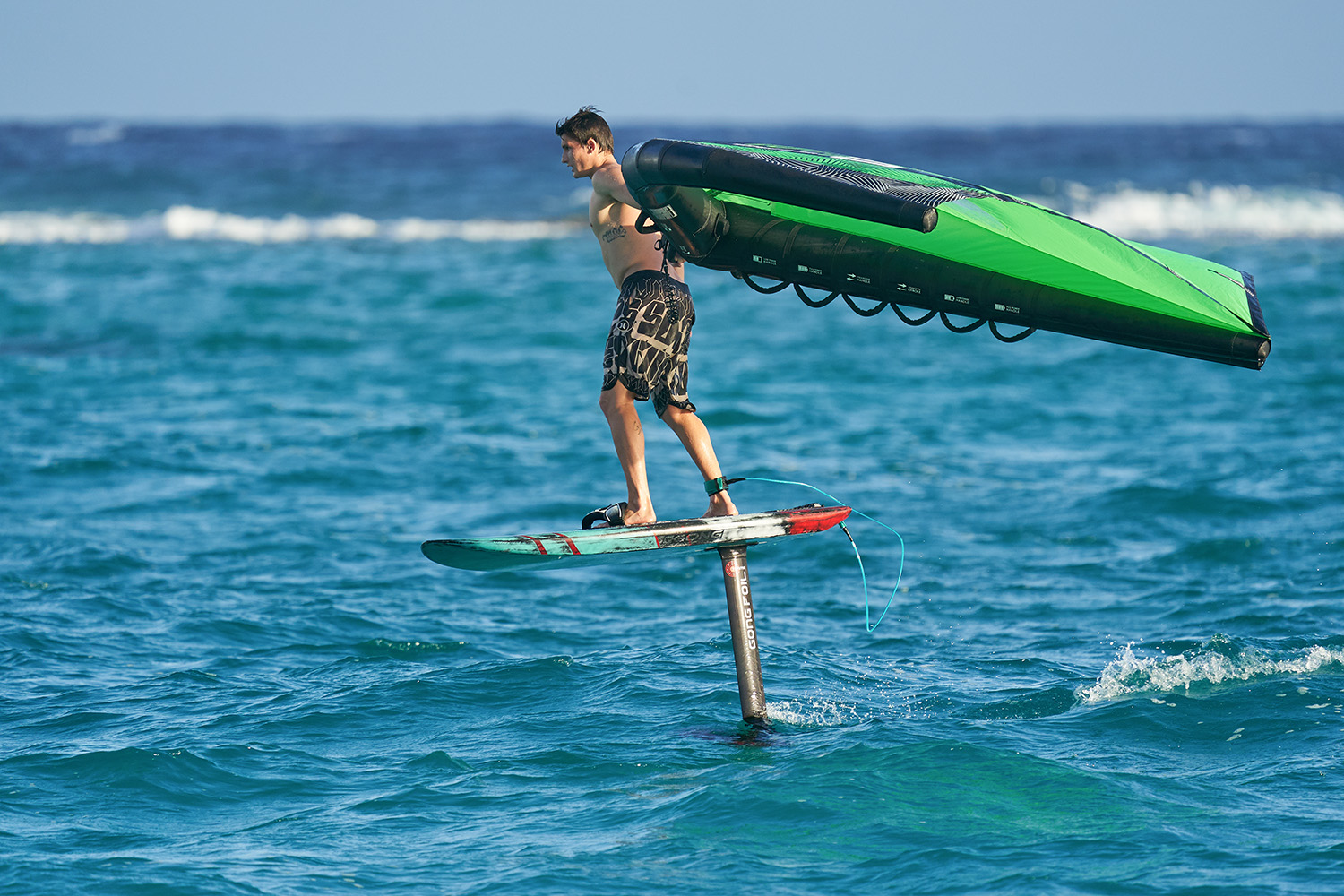
The scoop:
You have to be careful on the scoop line (the banana) of the Wing boards. It is indeed not rare to see absolutely ineffective scoops given the opportunists who throw themselves into this business.
Often, the initial ideas are good but sometimes deviate. For example, it is not uncommon to see Wing boards with a big spatula in front. The theoretical function is to better pass the waves and absorb the touchdowns. This is a mistake. Too much scoop at the front provides a more vertical surface in the water and therefore more grip. So the board will stop and make you fall.
Good ideas that are pushed too far often lead to big mistakes. A good board is a fair compromise that speaks to the eye just as a marine animal seems to be made for its environment.
A scoop must be harmonious and above all in connection with all the other parameters of the shape.
The hull work:
The reason has to outweigh the aesthetic. A very complicated hull, we’ve experienced this in the 80s. Tulips and so on… it made people sell and it hid the technological misery.
Hull work can bring real benefits if it is applied correctly. To say that a deep double concave under the nose sticks less is a misnomer. It offers more surface, so it sticks more, but this surface comes into contact with the water more gradually than a flat surface, so it softens the contact with the water, giving the illusion of more glide. If it is the damping that we are looking for, then yes the marked double concave is a solution. But it makes you lose volume that you have to make up for with more thickness or length, and therefore more rail, and more contact in curves etc etc etc etc etc….
Nothing is simple in terms of shape because nothing is isolated from the other parameters. Compromise and moderation are often the best solutions. In hull work, it is absolutely necessary to think about the hull in action in all its phases.
What volume of Wing board?
Ideally you should have a positive volume balance. Your weight plus the Board’s weight should be less than the Board’s volume. Don’t hesitate to take some volume and width if you are not sure of your support and equilibrium.
You can gain enough volume to float, in the order of your weight + 10 = necessary volume.
Example: I weigh 80kg + 10 = 90L to float provided I’m not a beginner. And if I want greater comfort, I will have to switch up to 110L.
We recommend taking a good 20L more for experienced young people. For beginners: 40L of extra volume is required.
Experience in Wing shows that we constantly make small mistakes that affect the buoyancy at the start. The body of water is rarely like a pool table and each surface defect also affects buoyancy. So even leaning on the wing will help, taking a board that is too thin will be a pain.
With a Wing, you can also do waterstarts with tiny Boards if you have a seriously high level and want maximum agility. You can switch to negative volumes. Up to your weight – 10 = volume you can go on your knees while leaning the Wing on the water. Below this volume you will have to do waterstarts while sinking the Board: it’s very technical, very physical, and you lose the lower half of your wind range. With each fall, you have to start all over again… Not very fun, and a very questionable performance gain. But some people love it and it’s beautiful when taking pictures.
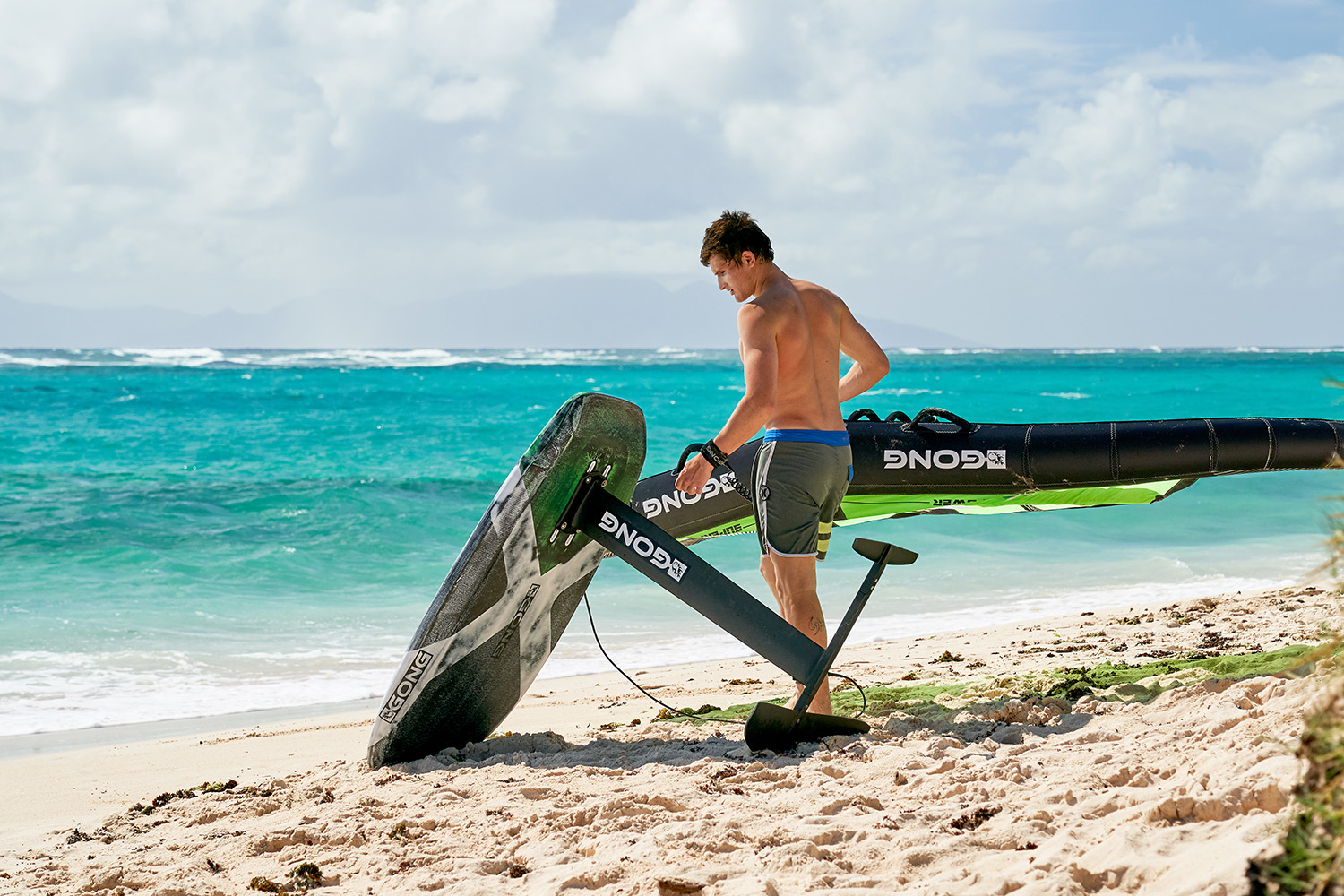
What Technology?
You have three main choices:
1/ The
monolithic boards: a blank and fiber layers, of all types, noble or not.
It’s simple, quick to produce, quick to break and cheap.
2/
Sandwich boards: a blank, a sandwich material and layers of fiber, of all types, noble or not.
What will condition the solidity of your sandwich is mainly its thickness. Yes, the density of the material affects its solidity, but the basis of the qualities of the sandwich is in the distance that the sandwich material imposes between layers of fiber. Then come its mechanical properties.
So the 0.6mm thick bamboo sandwich will be less solid than the 3mm thick PVC sandwich, itself less solid than the 5mm thick PVC sandwich, itself less solid than the 10mm thick honeycomb sandwich etc…
But the thinner the sandwich material, the easier it is to constrain it to the complex shapes of a board. So we save time and money. At the same time, the prices of these materials also rise in the above order, in order of their nobility.
3/
Inflatable boards:
So far, we don’t know any inflatable Wingfoil board capable of decent performances in Wingfoil. They deform a lot and return information very badly, making piloting risky. We recommend the use of rigid boards unless a brand brings a significant innovation to make the inflatable board comparable to the performances of the rigid one.
At
GONG, we only make top of the range Boards. Our low prices can only be explained by our choice of exclusively Direct Sales and distribution.
You have the choice between:
– The
FSP 2X which is both light and super strong. It is the best-selling technology because it mixes the most advantages and at a very reasonable price.
– The
Wood 2X which is much cheaper, but not as light.
– The
FSP Pro which has its PVC Sandwich that’s enveloped with hyper dynamic Full Carbon.
For whom?
Beginners without experience: Zuma in a larger size.
Sporty beginners: Zuma in your size.
Beginner in Wing but already a Foiler: small Zuma, big Lemon or Flint for versatility.
Experienced looking for the Swiss Army Knife: Mob 2taste.
Experienced looking for a SUPfoil / Wing high perfs combo: Flint.
Anyone who wants high performance in Wing: Lemon.
For What?
– The
Mob 2taste is the ultimate multi-purpose Board, SUP, Foil, Wing.
– The
Zuma is the best Board to start and progress in Wing.
– The
Flint is the best ratio between compactness and facility in Wing.
– The
Lemon is the quintessence of Wing, the Holy Grail.
What Quiver of Wing Boards?
You don’t need a lot of Wing Boards, because very often you will do everything with the one you fell in love with.
Only on the Lemon can you be tempted by two complementary volumes. Or you can complement a small Lemon with a generous Flint for the summer.
Of course, you can also complete your Quiver Wing with a range of foil-free SUP Boards. And Surfboards for windless days, so you never stay dry.
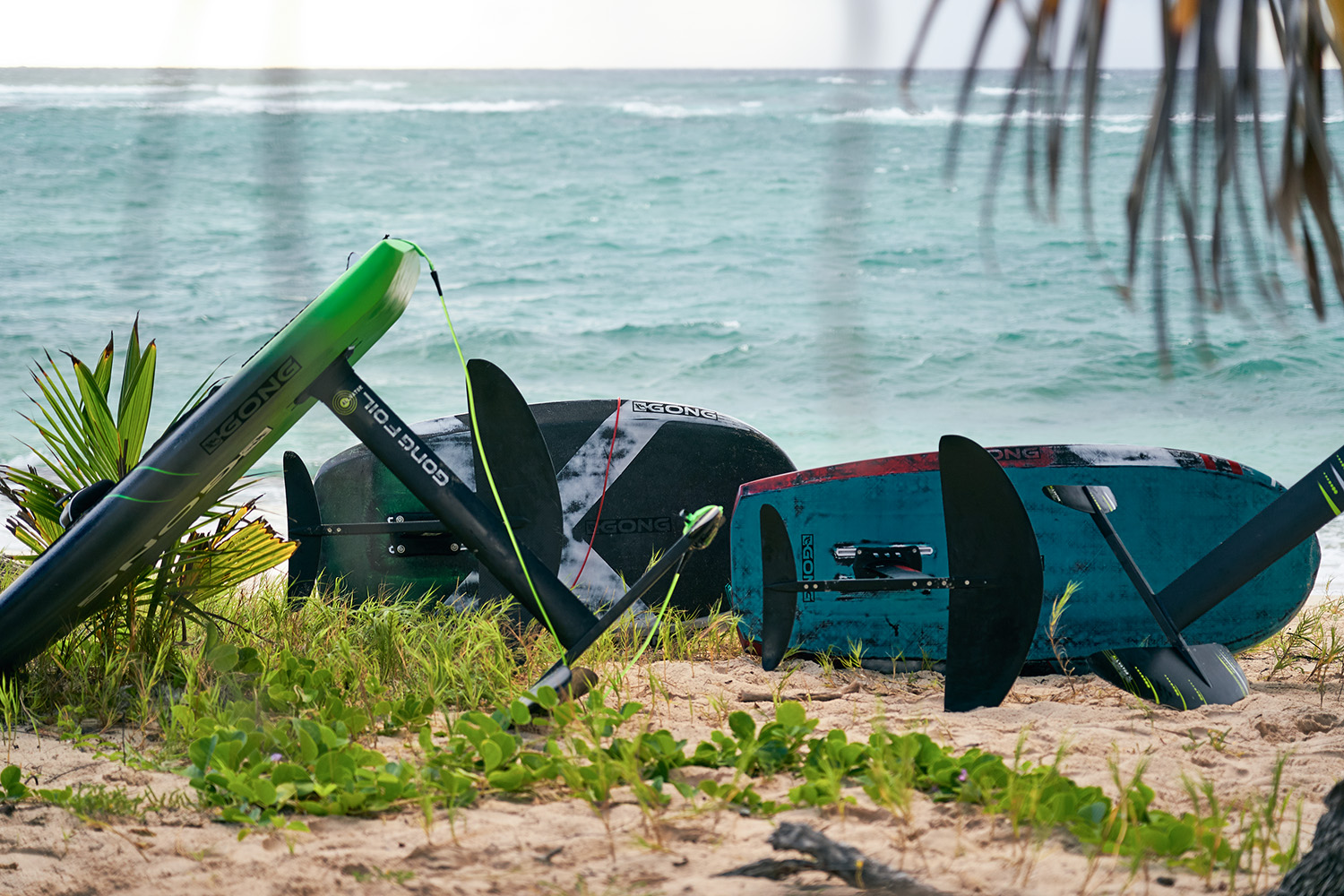
Good to Know:
The Foil strongly stabilizes a SUP when you are used to it. Do not compare the Board width of SUP without Foil with SUP with foil. 5cm less is painless with Foil, except with a strong back wash.
This extra width is necessary to speed up these very small Boards when rowing and not to get in too late.
Having a little water on the tail stabilizes the Board. Sometimes too much volume is worse than anything. This is very true in compact Boards that are wobbly.
Forum Link:
Know All about Wing’s Boards
Choose your Wing Board
